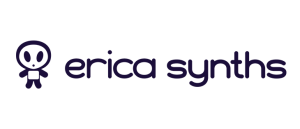Now in production for 16 years, Disney Theatrical Productions’ The Lion King remains one of the most popular musicals ever produced, having been staged in 13 different countries, seen by over 54 million people and grossing more than $4.2 billion to date. A DiGiCo SD7T is a feature of the current Spanish production, at Madrid’s Lope de Vega Theatre.

Above: Mix Engineer Germán Schlatter Cortijo with the SD7T for Disney Theatre’s Lion King
Supplied by Autograph Sound Recording, the SD7T is handling Front of House and monitor mixes. 46 stereo and 87 mono input channels, plus 19 stereo and 44 mono output channels, are used for a production with a 50-strong cast and 11 piece band.
Germán Schlatter Cortijo is the production’s mix engineer, as well as head of sound at Stage Entertainment España. Working in musical theatre since 1998, he is an experienced DiGiCo user.
“I first worked with a D5T on The Producers at the Coliseum Theatre in Madrid. After that was Disney´s Beauty and the Beast at the same theatre, followed by further Beauty and the Beast productions in Moscow, Milan and Rome,” he says. “This production was the first time that I have used an SD7T and the experience has been very positive.”

Pre-programming had already been done by (Broadway sound designer) David Patridge, but many adjustments still had to be made once the desk was installed. Working alongside Germán were local engineers Adrián Galones and Rubén Bustamante y Efrén Sánchez, plus Dickie Bower and Ben Lloyd from Autograph. For the rehearsal period an EX007 extender wing was added, making it much easier for programming to continue while Germán was mixing.
“The Lion King is a difficult production to mix, needing 100% concentration throughout every performance,” says Germán. “Although it’s performed eight or nine times a week, no two shows are exactly the same – the magic lies in the unpredictability of the human element. Because of this, although there are some programmed scenes, the main mix is done completely on the fly.
“The way the console is laid out is very good for both rehearsals and performances,” he continues. “You can see the stage, the script (in rehearsals), the musical director in the video monitor and the cue list, without having to keep moving your eyes. Its compact size makes it easy to reach any control and it reduces the size needed for the FOH position. This, of course, makes the producers happy! The distance between the faders is also perfect for musicals, where you spend most of the time with many fingers constantly moving the control groups.”
Critically, Germán has found programming the SD7T just as intuitive as mixing on it. “It is very easy to assign a group of channels to control groups, as well as layering them and the channel banks,” he says. “Importantly, the EQs do exactly what they show they are doing on the console’s screens, and they sound great.”
He is also very impressed with the way that DiGiCo listens to users, including the facilities that they most want.

“DiGiCo’s James Gordon visited Madrid in 2006 and asked my opinion about using the D5T on musicals,” he says. I said it would be very handy to have a soft and a hard mute, being able to access them with just one hit. It would allow us to instantly mute any unexpectedly noisy RF, but continue passing cues with the channel muted until the guys on stage could fix it.
“When The Lion King arrived in Madrid, I was really impressed to see that this had been included on the SD7T.”













































